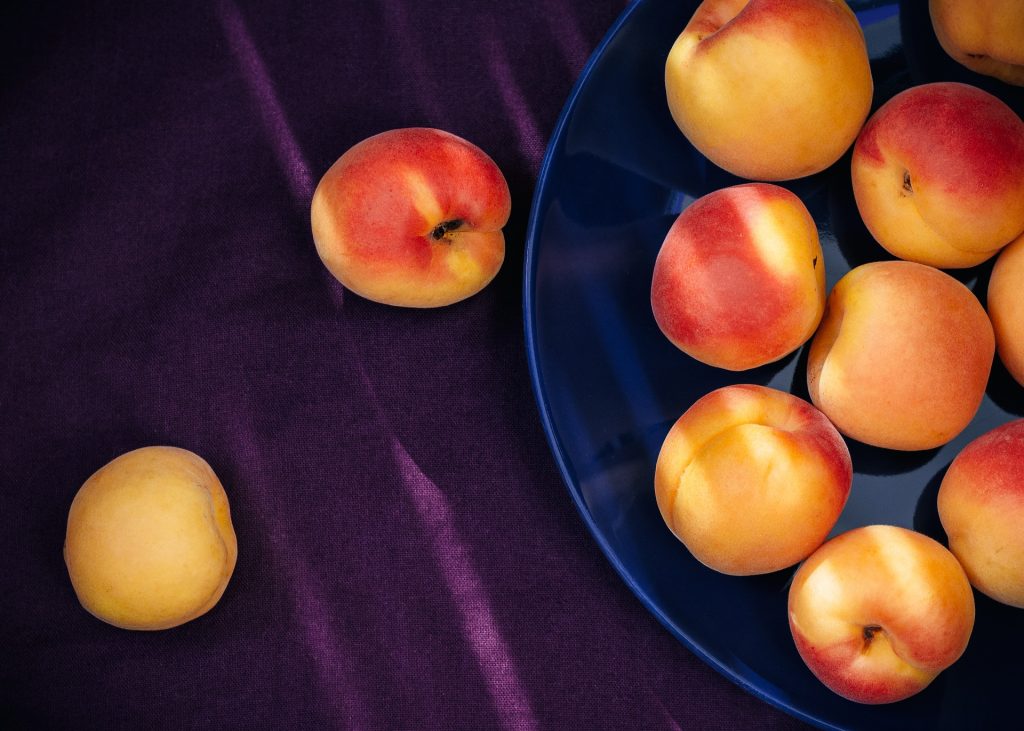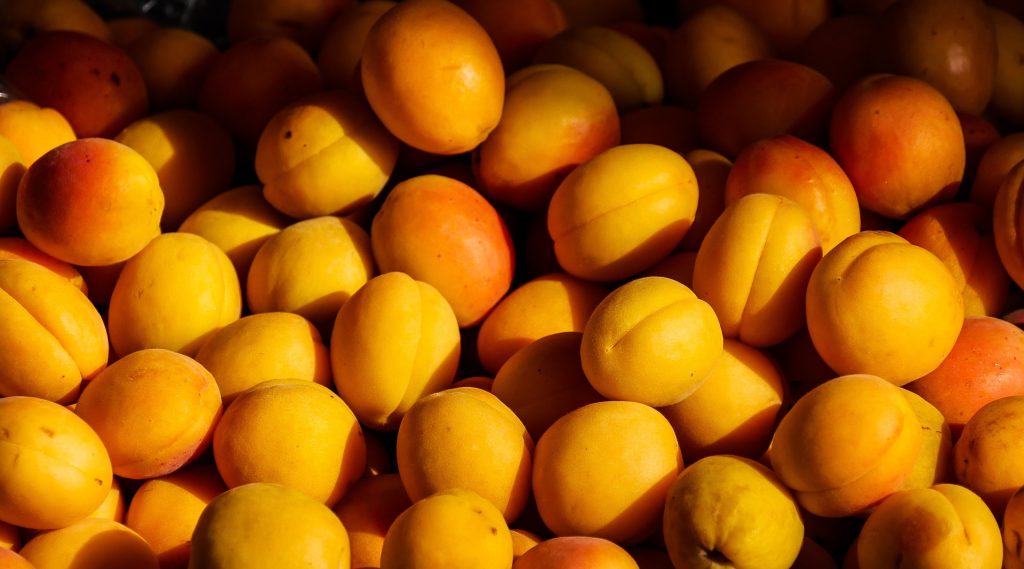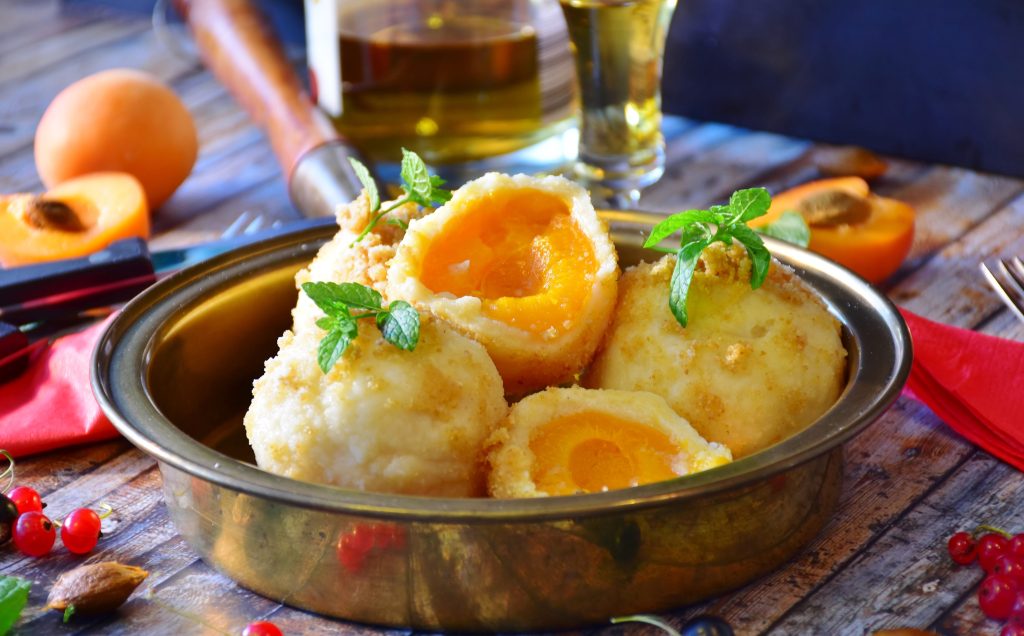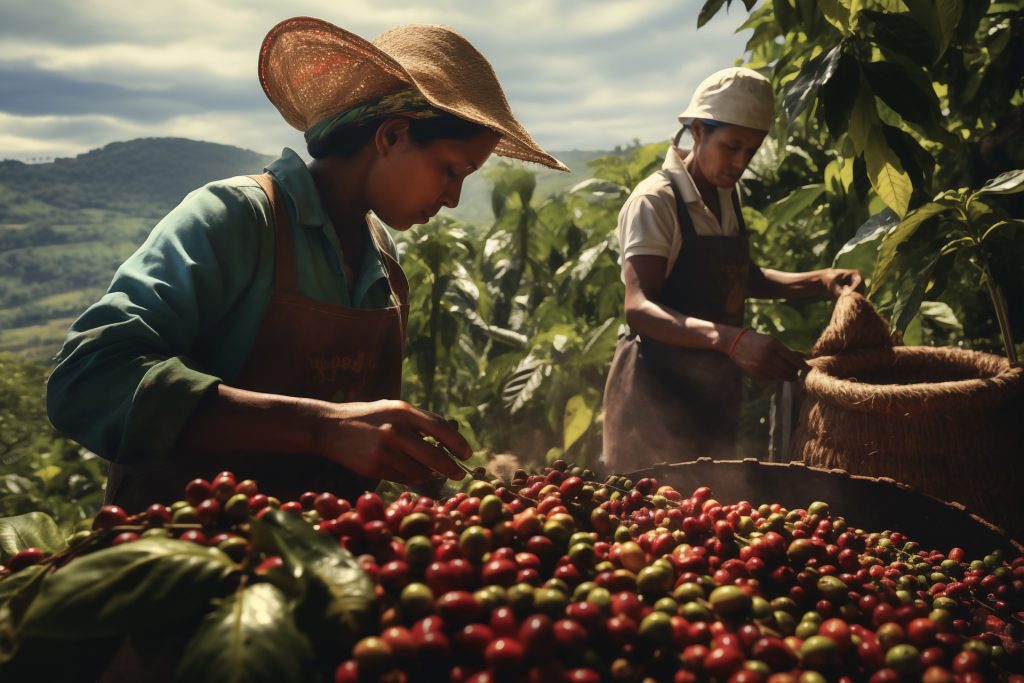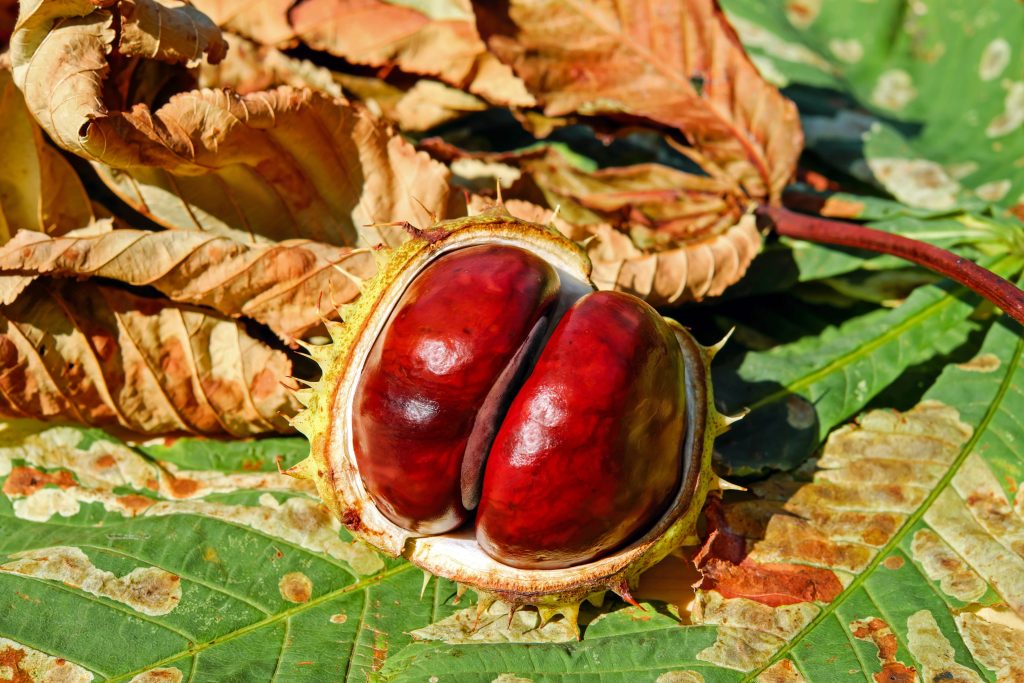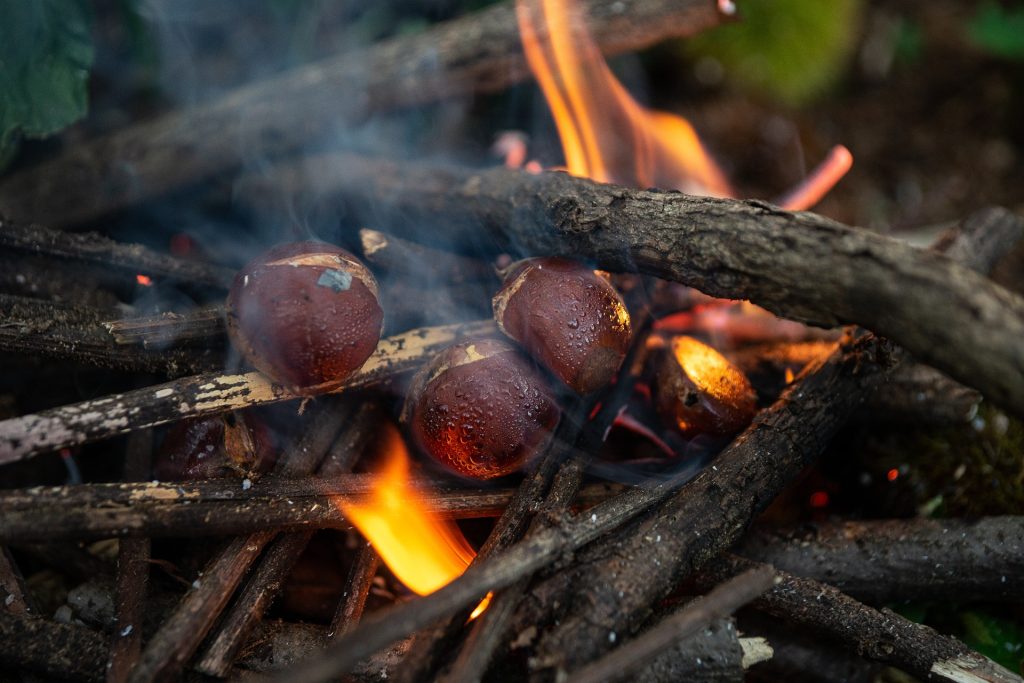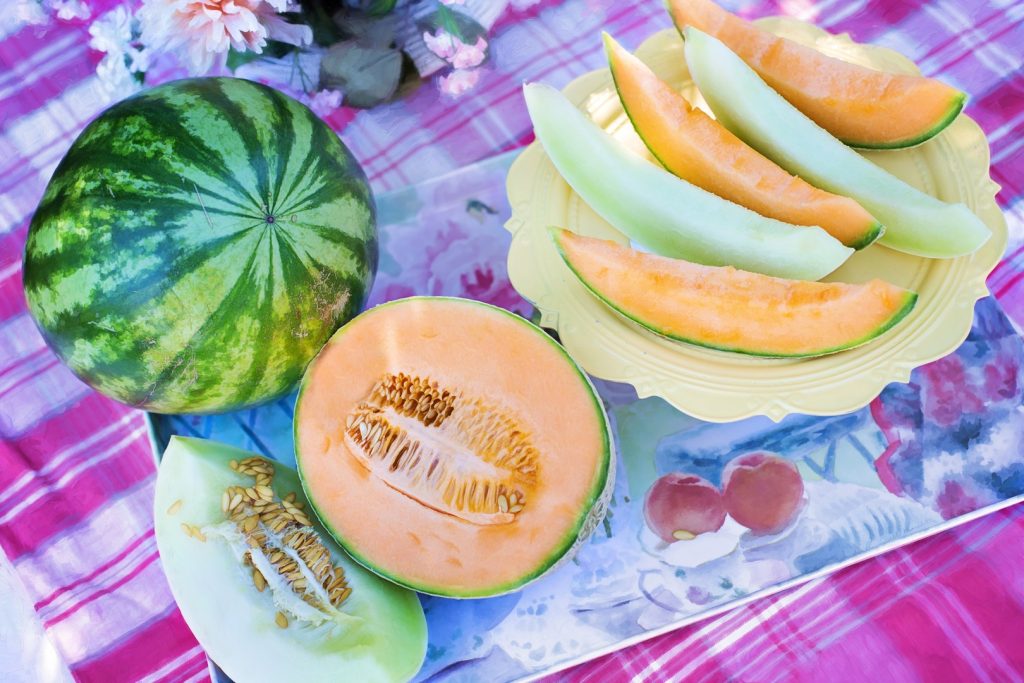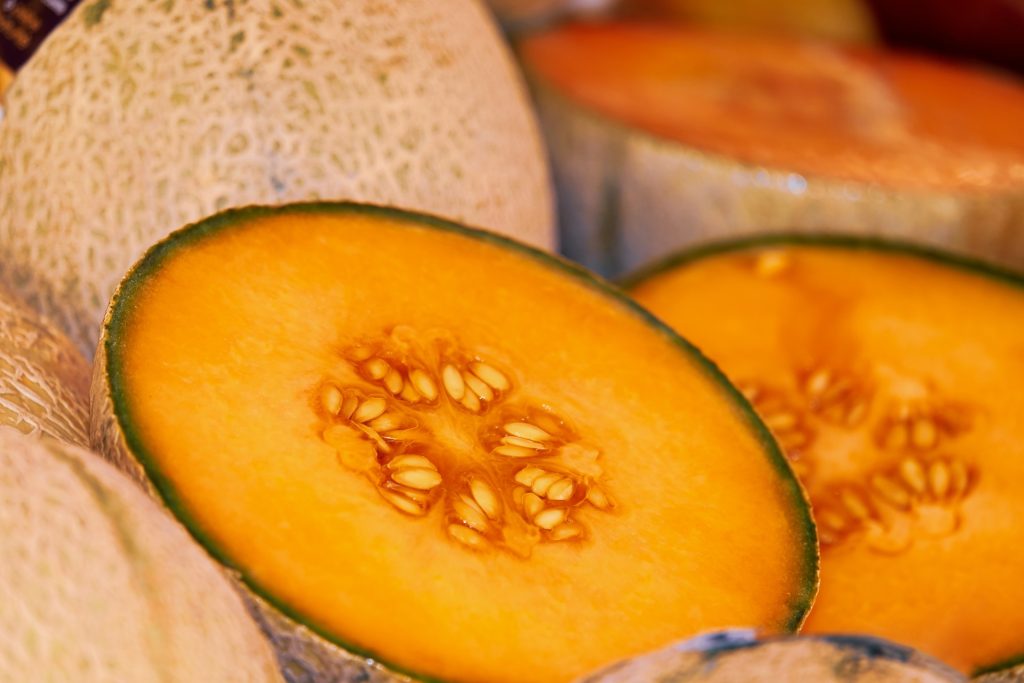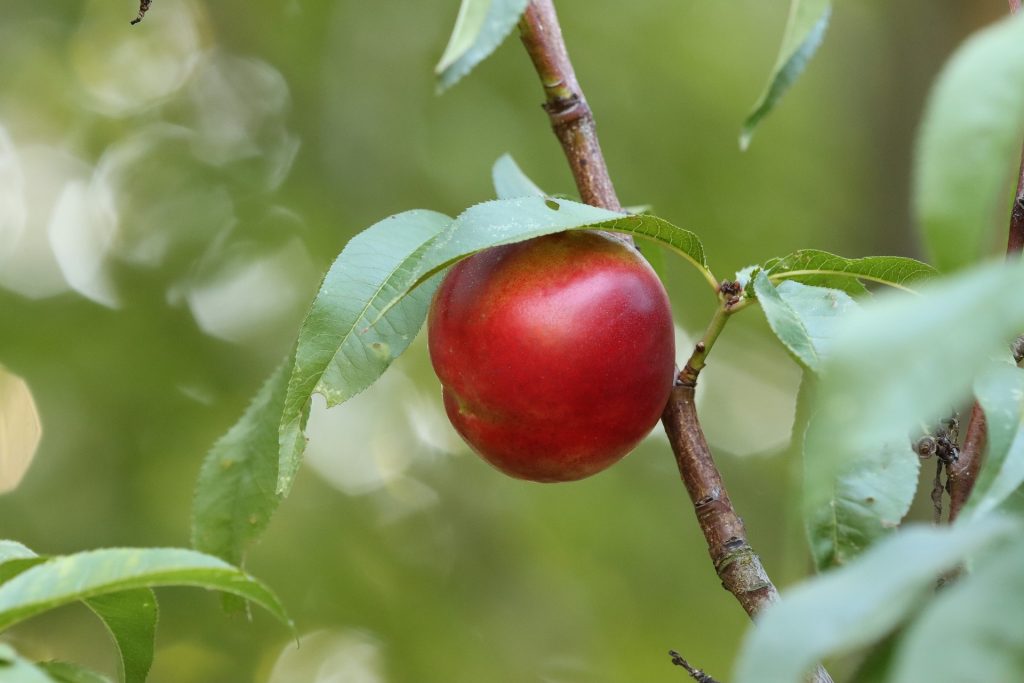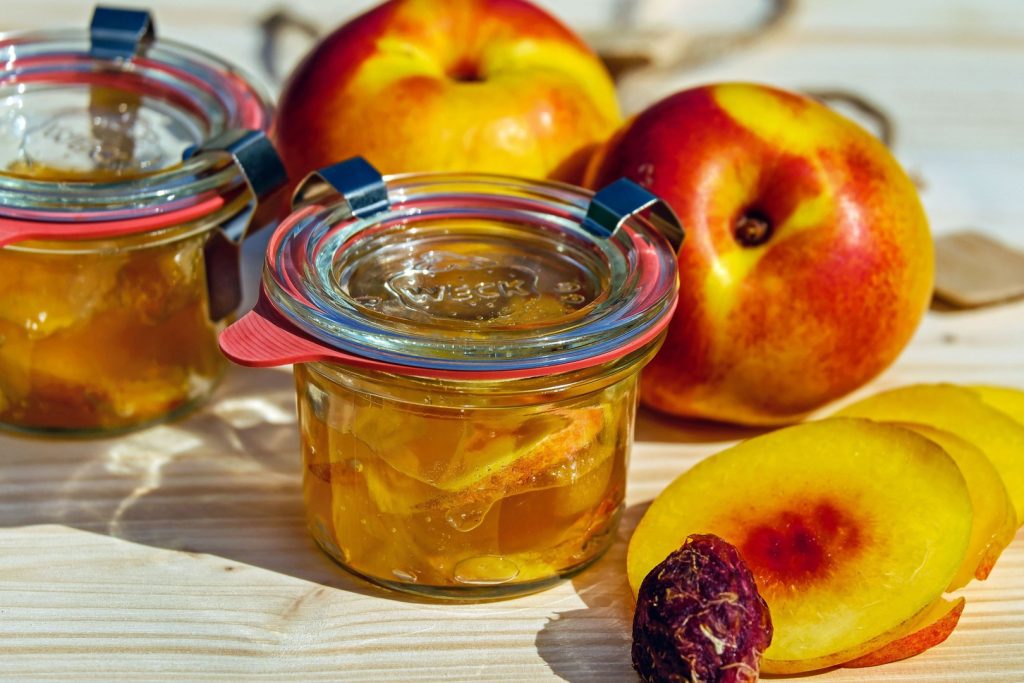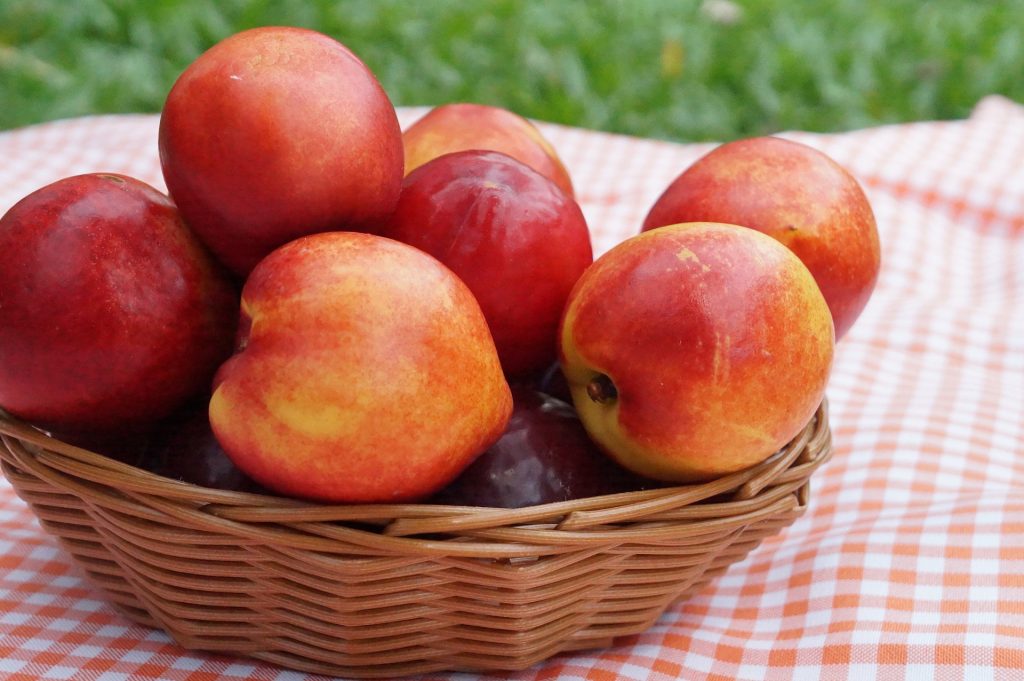Blog
Find articles that matter. From trading to shipping, trends to valuable goods, you can deep dive into everything you need.
Latest Posts
Blog
Do you know that the most researched product groups in the world belong to the cosmetics industry? When the cosmetics industry is mentioned, colorful products and glittery packaging come to mind. The Egyptians have been the first to discover the concept of the cosmetics industry. People have started to produce products to look different and more attractive on special days and festivals.
With the ever-advancing technology, both the product and its packaging have begun to be produced in more vibrant colors. Although cosmetics is a field that is used to look more beautiful today, it also includes health. The cosmetic sector has expanded with various products produced for self-care. So what is Turkey's share in the cosmetics industry? Nowadays, when the concept of natural products gains importance, many countries import cosmetic products from Turkey.
Turkey's success in natural products has also brought innovations in the cosmetics industry. Especially after 2010, the tendency towards herbal ingredients in cosmetics has increased. Increasing its production diversity in this field, Turkey has come a long way in the export of cosmetic products.
What are the Most Popular Cosmetics Categories?
Although cosmetics have first been thought of only as the definition of change, it is now expressed as the beautification of health. As this is the main idea of the cosmetics industry, categorizations have also increased. What are the most researched and increasingly diverse cosmetics categories in the world? What are the most imported cosmetic products from Turkey within the framework of these categories? You can find answers to all your questions in this article.
1. Haircare
Haircare can be defined as an action that fulfills one's self-confidence. There have been days when you felt better when you had beautiful hair. It is also important that your scalp is healthy while your hair looks beautiful. For this reason, products that do not contain harmful chemical elements are preferred for hair. You've probably heard the shampoo definitions such as anti-dandruff, moisturizing, or effective against hair loss. Natural haircare products that provide all these benefits and more are among the most preferred cosmetic products.
Shampoo
Shampoos produced from plant extracts such as chamomile, yarrow, and mint are preferred because they are herbal. In addition, the presence of different regionally known herbs in shampoos in Turkey is an important factor in the import of this product group.
Hair conditioner
Another important group among hair care products is conditioners. The fact that each hair has a different structure means that their needs are also different. For this reason, one of the most sought-after and demanded hair care product groups is hair conditioners.
Hair Mousse and Oils
Hair mousse and hair care oils, which have become increasingly common in recent years, are on the list of best-selling products. Almond and olive oil are very beneficial products for hair. Since the production of these products is high in Turkey, they are among the most imported products from Turkey.
2. Skincare
Conditions such as air pollution, stress, and aging have increased the attention given to skincare. In addition to these situations, products with more functionality such as depilatories and products that prevent the smell of sweat are also included in this cosmetic group. In skincare products, especially the production and import of additive-free products have increased. Thanks to its natural product portfolio, Turkey has experienced an increase in skincare product demands.
Sunscreen
Sunscreens play an important role in body care, especially in summer. However, the oxybenzone component, which is usually used in sunscreen, causes allergic reactions. For this reason, anti-allergic sunscreens are produced in many countries. Turkey is among the countries that produce anti-allergic sunscreens that even children can safely use. Many countries that prioritize skincare also import sunscreen from Turkey.
Deodorant and Aftershave
Do you know that the largest export share in the cosmetics sector in 2021 belongs to the deodorants and aftershave group? In addition to the increasing importance given to cleanliness, the search for new fragrances has also come to the fore. An increasing number of cosmetic companies in Turkey have started to try new fragrances and new formulas. In this way, aftershave lotion and deodorant supply-demand from Turkey increased.
Soap
Although soap was first included in the cleaning products category, it later became involved in the cosmetics industry. Especially rose, laurel, and olive oil soaps are highly preferred in skincare. These products are produced in Turkey as registered products. Producers who advocate naturalness in soap production have developed natural formulas that renew the skin texture. Tourists who visited Turkey showed interest in natural soaps and took them to their countries. In this way, import demands increased as Turkey's natural soaps became known around the world.
3. Color/Make-up Cosmetic Products
Color cosmetics or make-up products are the most widely used cosmetic products. Products diversified with special pigments are especially preferred by women and make-up artists. In 2021, make-up products have a share of 24% of cosmetics exports in Turkey. New brands of makeup products appear every year. In this way, Turkey’s color cosmetics portfolio is also expanding continuously. Especially vegan eye and lip make-up products in its diverse portfolio are among the most imported products from Turkey.
4. Perfume
Fragrances can be characterized as an area that eliminates the gender factor. Because although the cosmetics industry is perceived as a feminine field, perfume is a product that men and women spend on at the same rate. The perfume industry, which has the most diverse market in the world, should not be ignored. Perfumes containing essential oils, essences, and many components are important both for personal use and as a home fragrance. With its history based on old Turkish fragrance laboratories, Turkey is also an important place in perfume manufacturing. Companies import perfumes from Turkey, especially for customers who prefer exotic notes.
5. Baby Cosmetic Products
The baby cosmetics category is a more specific area. Anti-allergic products suitable for babies' sensitive skin are always important. Although many R&D studies have been carried out on this subject, fragrance has also come into play. Baby cosmetics include shampoo, shower gel, and lotions. It is aimed to protect the health of babies with natural flower and plant extracts. We can say that Turkey has great importance in the import of these products.
As a result, Turkey is an important base in the production and supply of products in the cosmetics industry. In this list, we have compiled the best products that you need to import from Turkey. You can benefit from the Turkish Goods experience in the import processes of these products.
When choosing cosmetic products as a way of beautification of health, you can browse the Turkish Goods’ website in order not to deal with problematic transportation processes.
It flavors dishes and salads. It is an indispensable ingredient of cosmetic products. Yes, we are talking about olive oil. Olive oil is used by consumers all over the world today. In addition to the taste, its health benefits make olive oil very preferable. But it is useful to point out one thing in advance. The taste and texture of every olive oil are not the same. The country of origin and production stages make olive oils different from each other. Weather, harvesting and processing, and even packaging shape the olive oil. These factors determine the taste, smell and color.
Today, countries take pride in olive oil production since it is a very valuable product. Do you know which countries produce olive oil the most? In this article, we will talk about olive oil production in the world. Also, you will find interesting information about olive oil. Let's dive into the details together.
A Short History of Olive Oil
Before presenting the countries that produce the most olive oil, let’s take a look at the history of olive oil. In ancient times, wild olives were used for olive oil production. These wild olives emerged in Asia Minor about 6,000 years ago. This region now covers the majority of today's Turkey. So, it is no surprise that Turkey produces delicious and high-quality olive oils. Ancient people used olive oil for religious rituals, medicines, oil lamps, soap making, and skincare. This ancient ingredient still stands out in every aspect of our lives today.
Global Olive Oil Production
As we took a look at the brief history of olive oil, global production is next. The International Olive Council (IOC) shared the olive oil production data for the last year. The world’s olive oil production was 3,010,000 tonnes in the 2020/21 crop year. The IOC announced that 93% of total olive oil production comes from 16 member states and the European Union. This corresponds to 2,809,500 tonnes. Turkey is also among the IOC members.
Total production in the world in 2019/2020 was 3,266,500 tonnes. Therefore, there was an 8% drop in global olive oil production. The harsh weather conditions around the world played a role in reducing overall production.
Europe had experienced an unusual spring frost. Moreover, droughts, hailstorms, and forest fires occurred in the Mediterranean basin. As a result, this situation affected some of the producing countries. But the figures published by the IOC show that there will be an improvement. The IOC predicts a three percent increase in production in 2021/22. Therefore, the IOC expects the production to reach 3,098,500 tonnes.
Top Olive Oil Producing Countries
Spain
Spain is the country at the top of the list in olive oil production. The olive oil industry is one of the most established industries in Spain. It also makes a huge contribution to the country's economy. There are approximately 340 million olive trees in the country. Spain uses 90% of its cultivated land and olive production for olive oil. 23% of olive oils are in the organic class. As a result, Spain also produces sustainable products.
The country, which has a great value in the market, turns the climatic conditions into an advantage in production. Especially, the Andalusia region makes a great contribution to olive oil production. Also, Castilla-La Mancha is a region that has a large share in production. Farmers in this region cultivate particularly the Cornicabra Olive variety.
Spain produced 1.3 million tonnes of olive oil in the 2021/22 season. However, there was a 6.4% decrease compared to the previous year.
Turkey
Turkey has made its olive oil world-renowned with the care it has given for years. Farmers and successful producers are working diligently on fertile lands to create the best Turkish olive oil. There has been a tremendous increase in olive production in Turkey. Olive orchard facilities and certified olive sapling supports are the most important driving forces in this increase. Thanks to these factors, the number of olive production areas is rising. Moreover, Turkey achieves a unique quality by incorporating the latest technology into production.
According to TURKSTAT data, Turkey’s olive production showed a great increase in 2021 compared to the previous year. There was a 32.1% jump in production. This development naturally had a positive effect on olive oil production. Turkey's olive oil production increased by 35 percent in the 2021/22 season. In total, it reached 236 thousand tonnes. Olive oil is one of Turkey's most important export products. It is also at the top of the list of domestic oil stocks. Especially, the cities on the Aegean coast make a great contribution to production.
Turkey exported 37,000 tonnes of olive oil in 2021. The countries to which Turkey exports the most were the USA and Spain. Wouldn't you like to import from Turkey too? If so, Turkish Goods is here for you. You can easily find the best quality and delicious olive oils produced in Turkey. Experience Turkish Goods quality for a perfect import process and high-end products.

Italy
Italy is the second-largest olive oil-producing country in the European Union after Spain. Of course, as in Spain, the climatic condition of the country is very effective in high production. Together, these two countries meet 50% of the world's olive oil production. Most of the olive oil in Italy comes from the southern part of the country. Especially Sicily, Sardinia, and Basilicata regions achieve great success in olive oil production every year. Italy produced 315 thousand tonnes of olive oil in the 2021/22 season.
Moreover, Italy stands out due to using a different method in olive oil production. Manufacturers mix extracts of different types of olive oil. Their aim in doing this is to obtain high-quality oil. As a result, these techniques prove quite useful for the production of palatable oil.
Greece
Greece is the next stop of our olive oil tour in the Mediterranean basin. Olive oil is of high importance to this country. Olive trees grow on 60 percent of the cultivated land in Greece. There are numerous olive trees, especially in the Peloponnese region. There are 2800 olive mills across Greece. As a result, a country with such a high level of olives stands out in olive oil production.
In the 2021/22 season, Greece produced 235 thousand tonnes of olive oil. It exported more than half of that. This figure indicates stability compared to other European countries. As a result, Greece has become the fourth largest exporter in the European Union.
Tunisia
Tunisia has come to the fore in olive oil production, especially in recent years. Producers in Tunisia use the coastal plains to grow olives. Particularly the Sahel region is a favorite location for olive cultivation. Moreover, the country has been more involved in technology in recent years. Therefore, as in the case of Turkey, it achieves success with the help of technology. Tunisia produced 240 thousand tonnes of olive oil in the 2021/22 season. This means an increase of 71.4%.
We have listed the top olive oil-producing nations of the world above. Now you know where the delicious olive oil comes from. Turkish Goods expertly delivers this flavor to the world. We are always with you for your import needs.
Cocoa is the secret to the mouth-watering chocolates we all love eating. Most of us would love to travel to a place like Willy Wonka’s chocolate factory and dive into a world full of sweets. The secret to Willy Wonka’s unique chocolates was a very special cocoa bean he found. Similarly, different cocoa beans from different parts of the world produce different results. Cocoa beans are processed into different products such as chocolate, cocoa powder and cocoa butter.
The cocoa tree is native to the Amazon’s rainforests. It is also grown in parts of Africa and Asia. What makes cocoa beans so special is related to their cultivation. Cocoa trees are cultivated in small areas. This is because cocoa trees are prone to various diseases and the disease spreads quickly. Producers can lose between 30 to 100% of their production due to diseases. Therefore, cocoa production is a difficult process and it affects the prices of cocoa products. Let’s take a look at the top cocoa-producing countries in the world and what makes them so special.
Top Cocoa Producing Countries
Côte d'Ivoire
Côte d'Ivoire is by far the largest cocoa bean producer in the world. In the 2019/2020 period, Côte d'Ivoire produced 2,1 million tons of cocoa beans. Also known as Ivory Coast, this country in West Africa makes up at least 30% of the world's cocoa production. The country’s economy is highly dependent on cocoa production and exports. Therefore, the price of cocoa beans is quite an important factor for Ivory Coast.
Ghana
Ghana is the second-largest cocoa producer in the world. However, even as the second country, Ghana’s production in the 2019/2020 period is well behind Côte d'Ivoire with 771.000 tons. Similar to other countries that produce cocoa beans, Ghana’s economy is also dependent on cocoa. 30% of the revenue generated from their exports comes from cocoa.
Ecuador
Ecuador is a popular cocoa producer. You may be familiar with it if you came across it on a chocolate bar. Despite the fact that Ecuador's cocoa beans are one of the favorites of artisans, cocoa production is not that high. Compared to other countries, Ecuador comes third with 342.000 tons of cocoa production in the 2019/2020 period.
Cameroon
Cameroon follows Ecuador closely in cocoa production and ranks fourth. In the 2019/2020 period, Cameroon produced 280.000 tons of cocoa.
Nigeria
Located near Ghana and Côte d'Ivoire, Nigeria is another big producer of cocoa beans in the world. Nigeria’s production of cocoa is close to Cameron in the 2019/2020 period with 250.000 tons. However, as the cocoa trees in Nigeria are getting old, new methods of cultivation become important. Hence, technological developments and diversification of cocoa products are crucial for Nigeria’s future as a cocoa-producing country.
Indonesia
Differing from others, Indonesia is an Asian country that produces cocoa beans. In the 2019/2020 period, Indonesia produced 200.000 tons of cocoa. Again, unlike other countries on the list, cocoa production is a fairly new industry for Indonesia. Cocoa production started around the 1980s and peaked in 2009 in the country. Since then, however, the production of cocoa beans has been declining.
Brazil
Brazil is one of the countries that produce cocoa in South America. Even though it is not at the top of this list, it is the largest cocoa producer in South America. In the 2019/2020 period, Brazil produced 201.000 tons of cocoa beans.
Venezuela
Venezuela once was the world’s leader cocoa producer. However, in 2020, Venezuela produced 20.000 tons of cocoa beans. Even though the production of cocoa beans decreased over the years, Venezuela’s cocoa is considered to be the best cocoa in the world. According to the International Cocoa Organization, Venezuelan cocoa exceeds global excellence standards. What makes Venezuelan cocoa so special is its varied genetics along with the cultivation location and climate. Therefore, chocolate made of Venezuelan cocoa beans is far more delicious.
How are Cocoa Beans Processed?

Once the cocoa beans are harvested, they are not used immediately. In order to bring about the cocoa beans’ natural flavor, fermentation takes place. This process turns the taste of cocoa beans into what we associate with chocolate. The fermentation process takes about 2-10 days depending on the type of cocoa bean. After the fermentation phase, the cocoa beans dry in the sun. This is when the cocoa beans’ color starts to change from reddish-brown to a darker brown. The process of drying usually takes 1-2 weeks.
After the quality inspection, cocoa beans are transferred to manufacturing facilities where they are sorted, cleaned, and roasted. Roasting is a crucial step that gives the cocoa bean a distinct chocolate flavor. After roasting, cocoa beans are separated from the shell, leaving a cocoa nib. This is the main ingredient in making chocolate. These nibs are then ground into a paste. This paste is also known as chocolate liquor. It is not alcoholic by any means. The name is purely given due to its liquid form.
At this point, the paste can directly be used in making chocolate or the cocoa butter can be separated. The paste is pressed until the cocoa butter is separated. After this process, it is separated into cocoa and cocoa powder. Furthermore, the grinding of the paste continues until it is smooth. Then, the paste and the cocoa butter are mixed in different quantities to make various types of chocolate. Lastly, tempering occurs to give the chocolate its unique texture.
Import Venezuelan Cocoa Beans from Turkish Goods
Finding high-quality cocoa beans is difficult. Finding Venezuelan cocoa beans is even more so. Turkish Goods exports over 1000 products to every corner of the globe. Working with a trusted network of suppliers in Turkey, Turkish Goods provides high-quality products in every category you can imagine.
With a 600-person team speaking in 13 languages, Turkish Goods adopts a customer-oriented approach and focuses on creating the best experience, making the process seamless. If you want to import Venezuelan cocoa, contact Turkish Goods and get the best, globally unique wholesale price within 48 hours.
To survive in the international arena, businesses engaged in trade should always follow the trends. Knowing the trends means having a comprehensive knowledge of the market. Trends in trading can change from year to year. Therefore, it is crucial to stay up to date so as not to fall behind the times. 2022 will be a year in which new trends in trade will emerge. What will happen, especially in this period when the effects of COVID-19 begin to disappear?
COVID-19 profoundly affected the global business world. 2020 has been a difficult year for many businesses. Major changes in the supply chain and uncertain economic climate strained traders. However, in 2021, the business world learned to live in the world of the pandemic. They have managed to tackle the difficulties in the supply chain and the uncertain economy. Hence, the business world has now remained more flexible and adapted to changes. In addition, the pandemic reminded traders that they are working in an environment where uncertainties can occur.
The health crisis no longer affects the world economy much. Therefore, global trade is not under the influence of this crisis. There is still an imbalance between countries in imports and exports. But it is a fact that the global economy is growing. On the other hand, inflation problems arose in some countries. Still, developments so far point to an improvement.
Global trade has already achieved pre-pandemic levels. At the moment, geopolitical competition is increasing in many parts of the world. Therefore, it is significant for businesses to determine policy based on trends. International trade trends appear to normalize in 2022. Some factors will affect world trade. Here are what you need to be on the lookout for.
Economic Growth but Slower
World Trade Organization (WTO) made some predictions about the world merchandise trade volume. The WTO stated that the growth of this volume is at a level that could reach 4.7% in 2022. On the other hand, the Center for Economics and Business Research (CEBR) predicted it to be 4%.
It is already obvious that there will be economic progress. But like last year, this progress will vary depending on the region. Developed countries will gain at a higher rate compared to developing countries. Vaccine distribution, economic policies, and political factors are typically the causes.
There are downward revisions for economic growth forecasts for 2022. IMF changed its forecasts for this year. It lowered its economic growth forecast for 2022 from 4.9 to 4.4. Inflation in the USA and developments in China's real estate sector were the reasons for the decline. Thus, global trade trends will likely reflect these developments. As a result, this indicates a lower-than-anticipated growth.
Normalization in Supply Chains
The pandemic has posed major challenges for the supply chain. Especially logistics problems and energy prices led to a shortage of supply. It also led to an increase in shipping costs. Therefore, many suppliers have struggled to improve their reliability. Moreover, there is a diversification in terms of suppliers. These efforts seem to affect the business world in 2022. Gradual improvements in supply chain challenges appear to come through 2022.
Hybrid Methods in Logistics
Travel restrictions in the past years have reshaped some logistics strategies. Many companies are reviewing the methods they use. As a result, they are likely planning to adopt new hybrid approaches. In 2021, some supply chains began to operate more locally. Others, on the other hand, have made their chains wider and more diverse. Suppliers who do not want to experience losses with a single method may be considering a new method. The hybrid strategy, which is a mixture of methods, appears as a great possibility.
There are also changes in the manufacturing part. Manufacturers, acting with the just-in-case inventory method, started to adopt the same method in logistics. It'd be better to explain the just-in-case model here. In this model, manufacturers keep a large amount of inventory on hand. Because they want to avoid the lack of products in stock at the time of need. The same approach will likely appear in logistics. Some companies will probably retain offshore production facilities. At the same time, they may intensify the production of some goods in domestic markets.
Sensitivity to Climate Change

The global sensitivity to climate change has increased. The increase in this sensitivity in the world is naturally reflected in trade. Many companies are now embracing a more circular economy. Their aim is to reduce greenhouse gases and carbon emissions. We have seen the signals that these developments will take place in 2021. Especially the last COP26 summit was the footsteps of global climate sensitivity. The summit focused particularly on the use of coal. COP26 invited many countries to reduce the use of coal.
As a result, many countries have agreed to phase out coal use. Many international businesses have stepped up their efforts to reduce their carbon footprint. Therefore, we will start to see the effects of this decision on trade in 2022.
New Era in Trade Agreements
On the first day of 2022, there was a development that will facilitate trade between most of the East Asian and Pacific countries. The Regional Comprehensive Economic Partnership (RCEP) is an important agreement to facilitate trade. This move seems to increase trade significantly. This partnership could also change the direction of trade in non-member countries. As a result, trade may become more regional in that part of the world. Besides, this regionalization trend may occur in other areas of the world.
Major Advances in Cold Chain Technology
Again, we came to another area that took shape with the effect of the pandemic. Cold chain technology has undergone major changes, especially with vaccine distribution. Because vaccines need to stay at a specific temperature to not lose their effect. Therefore, the importance of cold chain technology has emerged once again. The emerging system for vaccines proved useful for other goods as well. A transition to a new stage has begun, especially in the transportation of food and medical products. Therefore, cold chain technology is advancing in these areas as well. This progress will continue in 2022.
Above, we talked about some trends that could happen in 2022. Of course, as every year, unexpected things can happen. The important thing here is to realize that knowledge is power. It's up to businesses to act in line with trends or vice versa. But being reliable and durable in international trade is essential for any business.
Turkish Goods knows the world in which it operates very well and takes its steps wisely. We never lag behind the times in supply chain and logistics, and we follow global trends very well. We owe our reliability and quality to our continuous improvement. If you are looking for a reliable partner in the market, you can click here to get information about our services.
With the arrival of the spring season, the weather gradually warms up. Colorful fruits begin to take their place in the fruit and vegetable sections of the markets. People want to consume especially juicy and refreshing fruits in the spring months. As one of the countries in the mid-rail, Turkey is a country rich in fruit diversity. Turkey exports fruit to many parts of the world, especially to Russia and Eastern European countries. So, what are the spring fruits you can import from Turkey?
What are the Characteristics of Fruits Consumed in the Spring?
The fact that humans consume food according to the seasons is a result of evolutionary adaptation to the environment. Just as we consume more energizing and fatty foods in winter, we tend to invigorate juicy fruits in spring. In this way, we keep our bodies in balance. In the spring season, we tend to eat fruits rich in antioxidants, low in sugar, and in green tones. So, what do you know about the spring fruits you can import from Turkey?
An Overview of Fruit Imports from Turkey
Turkey exported more than 1 billion dollars of fruit in total in 2021. Since it is a country suitable for growing fruit in 4 seasons of the year, export and import circulation in Turkey is carried out without any problems. Since fruit production exceeds the domestic demand, those who want to import fruit from Turkey do not encounter any quota restrictions. Especially in the last two years, despite the Covid-19, Turkey has managed to increase its export rate. For the year 2022, Turkey continues to support farmers and comply with international standards.
Which Fruits Can You Import from Turkey in Spring?
Although green-colored fruits predominate in the spring, fruits such as strawberries, green almonds, Japanese plums, and apples are also grown in the spring. Since the period from ripening to harvest is relatively long, you can consume these fruits throughout all spring months. Only the durability period of strawberries may be a little shorter than other fruits. You should consider these situations before importing.
Green Plum
Green plums are commonly grown in Turkey's western and southern areas. Turkey is the seventh-largest producer of plums in the world, with a total of 220.000 tons. You can import the green plum, whose production has increased in recent years and whose cultivation area has expanded, from Turkey. While European countries come to the fore in plum imports, Saudi Arabia also imports plums from Turkey.
Avocado
Although avocado is a tropical fruit, it grows in the southern parts of Turkey. Avocado will surpass bananas and mangoes as the most traded tropical fruit in the 2021-2030 timeframe, according to the OECD and FAO's Agricultural Outlook report. Avocado production in Turkey has increased significantly, especially in the last 10 years. In fact, Avocado production in Turkey in 2021 increased by 53% compared to the previous year. Most of the avocado production is done in Antalya, but Mersin and Adana provinces are increasing their production day by day.
Apples
Apple originating from West Asia is a fruit grown in Turkey. Spreading from western Asia to Europe, the apple has species that are resistant to temperatures down to -30 degrees Celcius. The main reason why apples are preferred so much is that they can be stored for a long time and consumed throughout the year. It also has a wide usage area such as jam, fruit juice, marmalade, vinegar, and dried fruit.
Green, red, and gala apples are the most planted species in Turkey. Turkey's annual apple production is more than 4.3 million tons and most of the production is done in Isparta. The countries that import the most apples from Turkey are Indonesia, Russia, and Iraq. Turkey will continue to be one of the world's leading countries in both apple production and apple export.
Strawberries
Strawberry has grown in the world and our country, especially in recent years. The most important factor in increasing the importance of strawberries is their economic growth in different climates and soil conditions. In addition, strawberries ripen in a short time in a market period when fresh fruit is scarce, and they meet the need. Moreover, it provides a continuous circulation.
Since greenhouse and open-grown strawberry varieties are different, you can import the varieties that suit your needs. Strawberry production in Turkey is mostly done in the Mediterranean, Aegean, and Marmara regions. On a provincial basis, the highest production is made in Muğla. Turkey doubled its export amount in 2021 compared to the previous year. The most exported countries were Russia, Romania, and Iraq.
Green Almond
The homeland of the green almond, which is from the Rosaceae family, is southwest Asia. It was first grown in Turkey and the Middle East countries and then spread to Europe and America from here. The green almond tree is similar to the peach tree, but it is taller and long-lived. You can choose the green almond with sweet and bitter fruits according to your needs. The usage area of the green almond is quite common:
- Consumed as nuts when dried.
- Consumable in raw form.
- Can be used as almond oil and flour.
- Used in the cosmetics and pharmaceutical industry.
It can grow even on stony and gravelly soils. It is a perennial and can grow anywhere except in extremely cold and humid areas. Since the market value of its fruit is quite high, you can give priority to your imports. Green almond grows on the Mediterranean and Aegean coasts in Turkey. Especially Datça peninsula stands out in production. Turkey is one of the world's leading almond producers and one of the top 10 countries.
Japanese Plum
The Japanese plum, which has been grown in Japan for more than a thousand years, came to Turkey via Algeria and the Mediterranean. Japanese plum, which is mostly grown in the Mediterranean region, is grown in small amounts in the Aegean and the eastern Black Sea regions. The Japanese plum, which is consumed as fresh and marmalade, is a very popular fruit in the Mediterranean countries.
Import Spring Fruits with Turkish Goods Privilege
Turkish Goods delivers the best quality fruits of Turkey to you in a fresh and safe way. It helps you in all processes from packaging to quality control. Turkish Goods contributes to your planning by providing the necessary information in all transportation processes. Contact us to start importing spring fruits from Turkey.
With the spring, the weather warms up, precipitation occurs, and as a result, there is an increase in agricultural product production. Many vegetables are grown in Turkey in the spring season when there are the most optimal conditions for plants to grow. Just like fruits, green leafy vegetables come to the fore in vegetables. These vegetables, which are rich in fiber, also come to the fore with their juicy and refreshing effects. Turkey is one of the leading countries in the world in vegetable production. It produces vegetables in the amount that it can export abroad after meeting the supply in the domestic market. So, what are the spring vegetables you can import from Turkey?
How was the Vegetable Production Season in Turkey in 2021?
The year 2021 was declared the "International Year of Vegetables and Fruits" by the United Nations, as the effects of the coronavirus began to ease. In this period, especially promoting fruit and vegetable production and ensuring food security gained great importance. Accordingly, Turkey became one of the countries that increased its fruit and vegetable production in 2021. So, how did Turkey's vegetable production progress in 2021, and how much income did Turkey earn?
In 2021, Turkey increased its vegetable exports by 25% and achieved a revenue of 875 million dollars and 713 thousand dollars. Total fruit and vegetable exports exceeded 3 billion dollars. According to the Turkish Statistical Institute (TUIK), vegetable production increased by 1.8% compared to the previous year. Total vegetable production reached 31.8 million tons. Again, according to TUIK data, the production of tuber and root vegetables increased by 6.9%. Dry onion production in this group increased by 9.6% and dried garlic production by 13.5%. Finally, the production of white cabbage, a leaf edible vegetable, also increased by 0.6%.
What are the Vegetables Produced in Spring in Turkey?
Consuming vegetables and fruits produced on time is more beneficial for people in terms of nutrition. Vegetable diversity, which increases with the spring months, also plays an important role in human nutrition. You can import vegetables from Turkey to reach vegetables produced with the right agricultural techniques. Turkey, as a country where many spring vegetables are grown, provides you with great convenience in this regard. The vegetables grown in spring in Turkey are fresh peas, broad beans, spinach, artichokes, lettuce, asparagus, carrots, and purslane.
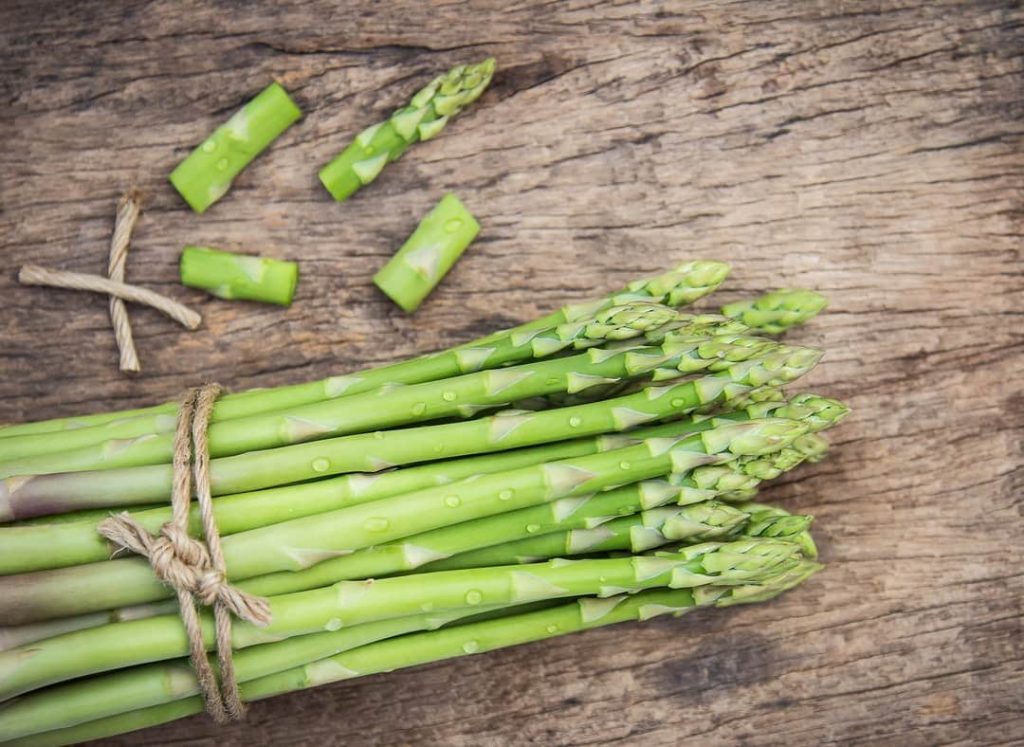
Fresh Peas
Fresh pea, which grows at an average temperature of 15-21 degrees, is a vegetable with a granular structure. Peas, which are consumed by boiling with other vegetables, are quite nutritious. An average of 107 tons of peas are produced annually in Turkey. The regions that stand out in pea production are Marmara, Mediterranean, and Aegean. It is more nutritious as it contains carbohydrates. Fresh peas are frequently used as a vegetable protein in vegan and vegetarian diets.
Fresh Broad Beans
Broad beans, which are often preferred by dieters, are rich in B vitamins, protein, and fiber. You can consume it raw as a salad, as well as boiled. The broad bean, whose homeland is southwest Asia and North Africa, grows mostly in the Aegean, Marmara, and Mediterranean regions of Turkey.
Spinach
Turkey is one of the most spinach-producing countries in the world. Today, it ranks 4th in the world with more than 200 thousand tons of spinach produced. Spinach, which is very beneficial for the body, is known as a superfood. Most of the spinach is grown in Izmir in Turkey. You can import spinach, which can be grown all over Turkey, from Turkey in the spring.
Artichokes
Artichoke, one of the main vegetables of the Mediterranean cuisine, grows in the Aegean and Mediterranean regions of Turkey. It is used in vegetable dishes, salads, and pizzas. It grows mostly in İzmir in Turkey. Turkey produces an average of 40 tons of artichokes annually.
Lettuce
Lettuce is high in fiber and contains vitamins A, B, C, D, and E. It is active in lettuce cultivation in Turkey, especially in the Aegean region. Turkey is among the top 10 lettuce producers in the world. With the increase in lettuce varieties produced in recent years, the market is growing. Lettuce is widely used in salads, sandwiches, and diet foods.
Asparagus
Asparagus, whose homeland is Central Asia, is a very beneficial vegetable for health. It is a vegetable suitable for diets due to its fibrous structure and containing folic acid. It is generally used in salads and meals. You can consume meat dishes with grilled asparagus. Asparagus, the production of which has increased every year in Turkey, is mostly grown in the Aegean region. The average lifespan of asparagus, which is a perennial plant, is 10-12 years. You can import delicious and nutritious asparagus from Turkey.
Carrots
Unlike green leafy vegetables, carrots are orange and rooted. Turkey, which produces more than 600 tons of carrots annually, is the 10th largest producer in the world. Konya produces more than half of the carrots in Turkey. Carrots produced in Turkey are mostly imported by European countries, Russia, and Arab countries. In addition to their health benefits, carrots have a wide range of uses. It is used in salads, fruit juice production, and the pastry industry.
Purslane
Purslane, which is grown almost everywhere in the Asian continent, is a low-calorie and nutritious vegetable. Being more than 90% water makes it an indispensable part of diet menus. Purslane, which is rich in omega 3 acids, shows the ability to grow even in cold climates. Turkey produces about 2000 tons of purslane annually.
Import Spring Vegetables with Turkish Goods Quality
With the Cold Chain Supply method, we deliver fresh vegetables to you wherever you are in the world. You can contact us to have the best quality vegetables which are produced in Turkey with the privilege of Turkish Goods. We provide you with the necessary technical support from the production process to the process of the vegetables reaching your tables. You can click here to reach the vegetables we grow every season of the year.

